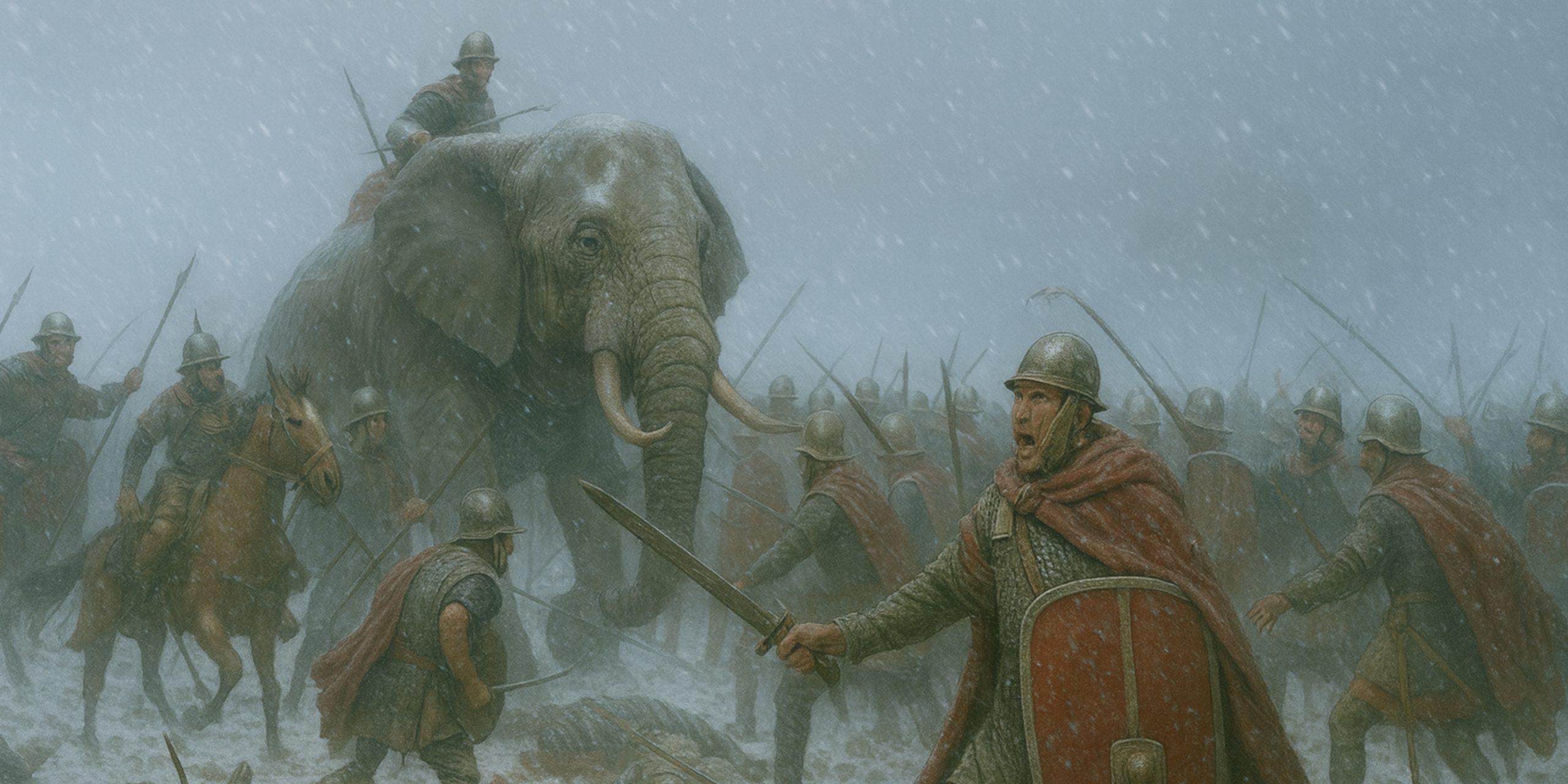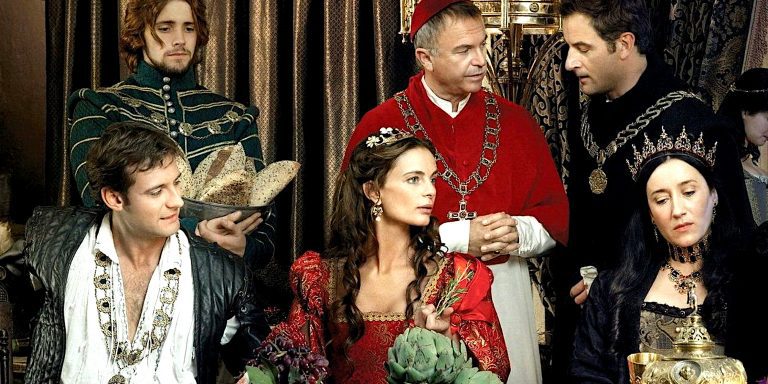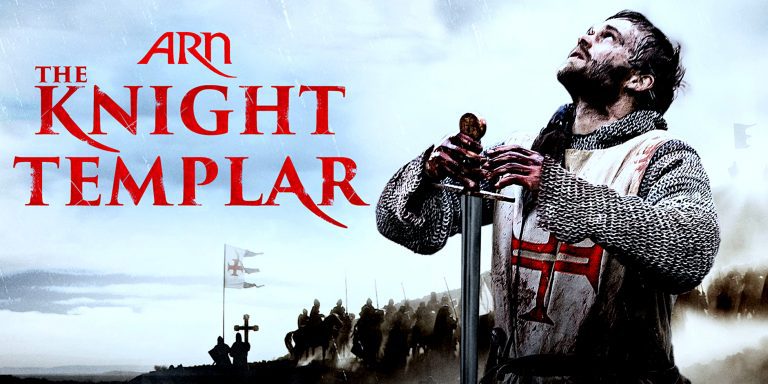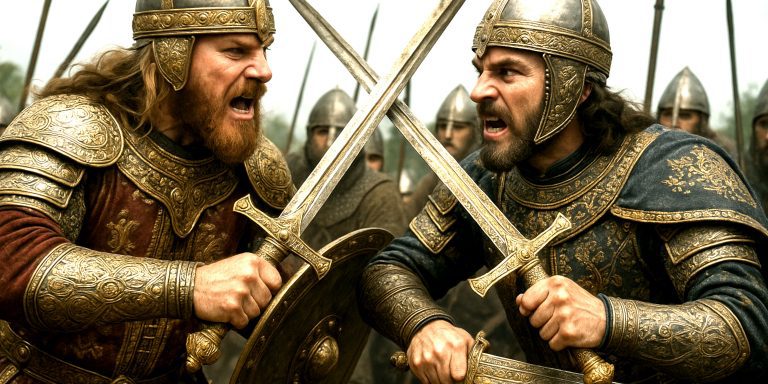
The Battle of the Trebia in 218 BC was the first major clash between Hannibal Barca and the Roman Republic during the Second Punic War. It set the tone for the long struggle that followed, showing Hannibal’s tactical brilliance and Rome’s vulnerability when drawn into unfavourable ground.
Background
After crossing the Alps with his Carthaginian army, Hannibal sought to secure allies in northern Italy and challenge Roman dominance. Rome, alarmed at his advance, sent consular armies north under Tiberius Sempronius Longus and Publius Cornelius Scipio. Hannibal, despite heavy losses during the Alpine crossing, relied on his veteran core of African and Iberian troops alongside local Gallic support.
Forces
Leaders
- Carthaginian: Hannibal Barca
- Roman: Tiberius Sempronius Longus (with Publius Cornelius Scipio recovering from wounds sustained earlier at the Ticinus)
Army Composition
| Side | Estimated Numbers | Key Units |
|---|---|---|
| Carthaginian | c. 25,000–30,000 | Iberian infantry, African infantry, Numidian cavalry, elephants, Gallic allies |
| Roman Republic | c. 40,000–42,000 | Roman legions, allied infantry, Italian cavalry |
Arms and Armour
Carthaginian Army
- Infantry:
- Iberians with short swords (falcata) and large oval shields
- Africans with long spears and captured Roman-style equipment
- Gauls with long slashing swords and chainmail
- Cavalry:
- Numidians with javelins and small round shields, lightly armoured and highly mobile
- Heavy Iberian and Gallic horsemen with spears
- War Elephants: Mostly North African forest elephants, used to disrupt Roman formations
Roman Army
- Legionaries: Equipped with pilum, gladius, scutum (large rectangular shield), and bronze or iron helmets with chain or plate body armour
- Allied Infantry: Similar equipment but of varying quality
- Cavalry: Roman and Italian horsemen with spears and limited protective gear
The Battle
On a cold December morning, Hannibal lured the Romans across the icy Trebia river after provoking them with Numidian skirmishers. The Romans, without breakfast and soaked from the crossing, formed up against Hannibal’s better-prepared troops.
Hannibal had hidden a force of 2,000 infantry and cavalry under his brother Mago in ambush. As the battle developed, the Roman infantry pressed hard in the centre but were enveloped by Carthaginian cavalry superiority and elephants. Mago’s ambush struck from the rear, sealing the Roman defeat.
Battle Timeline
- Pre-dawn: Hannibal orders Numidians to harass Roman camp
- Morning: Sempronius leads army across freezing Trebia without food or rest
- Midday: Roman infantry push back Carthaginian centre initially
- Afternoon: Carthaginian cavalry routs Roman horse, elephants sow chaos in flanks
- Final Phase: Mago’s hidden troops spring ambush on Roman rear, collapsing morale
- Aftermath: Up to 20,000 Romans killed or captured, though a portion of infantry fought their way out
Contemporary Quotes
- Polybius, Histories (Book 3):
“The Numidians, having crossed the river first, rode close up to the enemy and provoked them. The Romans, in their eagerness to engage, forgot the fatigue of the passage and advanced in disorder.” - Livy, Ab Urbe Condita (Book 21):
“The day was bitterly cold, with snow falling, yet Hannibal’s men, fortified with food and fire, seemed the stronger, while the Romans, drenched and faint, were no match for them.”
Archaeology
Archaeological evidence of the battle remains sparse. The exact battlefield location is debated, with sites near modern River Trebbia in northern Italy proposed. Finds include fragments of weaponry, Celtic swords, and Roman pila in the region, though direct attribution to the battle is difficult. Studies of topography suggest the Carthaginian ambush was feasible along the flat plains near the river.
Legacy
The Battle of the Trebia demonstrated Hannibal’s ability to turn Rome’s aggression against them. His use of ambush, cavalry dominance, and psychological manipulation of conditions foreshadowed later victories at Lake Trasimene and Cannae. For Rome, it marked the start of a gruelling war that would test the Republic’s resilience.
Watch the documentary:



